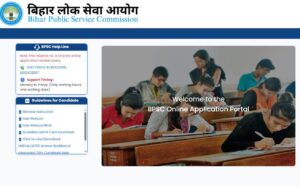What is Meant by Doctrine of Separation of Powers?
- Separation of powers refers to the division of the government’s legislative, executive, and judicial functions among separate and independent bodies.
- The Legislature makes laws, the Executive implements these laws, and the Judiciary interprets the laws and ensures justice is served.
- Purpose: The primary aim is to limit government power, preventing arbitrary excesses and misuse of authority.
- It ensures that no single entity accumulates power, thereby safeguarding society from irrational and unchecked state power.
| Quotes |
- “I say, that Power must never be trusted without a check.” ― John Adams.
- “Power corrupts and absolute power tends to corrupt absolutely” – Lord Action.
|
Origin and Evolution of Separation of Powers
- Aristotle’s Concept: The idea of separating governmental powers into distinct branches began with Aristotle in his work The Politics, where he outlined the need for different branches—judiciary, public officials, and a deliberative body—for balanced governance.
- John Locke’s Contribution: In the 17th century, British philosopher John Locke further elaborated on the concept in his work Two Treatises of Government. Locke advocated for three branches of government but believed the legislative branch should be the most significant, with the monarch exerting control over the others.
- Montesquieu’s Contribution: The first modern formulation was introduced by Montesquieu in his work The Spirit of Laws (1748), inspired by the English constitution.
- Montesquieu argued that liberty is best preserved by dividing governmental powers.
- United States Constitution: The doctrine was practically implemented for the first time in the United States Constitution:
- Article I: Gave legislative power to Congress.
- Article II: Granted executive power to the President.
- Article III: Created an independent judiciary.
- Adoption in India: During the drafting of the Indian Constitution, the Constituent Assembly debated including a clause on the complete separation of powers.
- Article 50 was eventually inserted, directing the State to separate the Judiciary from the Executive in public services.
| Other Important Articles |
- Article 53(1): Executive power of the Union vested in the President.
- Article 154: Executive power of the State vested in the Governor.
- Article 122 & Article 212: Courts cannot inquire into parliamentary or legislative proceedings.
- Article 105 & Article 194: Protection of legislative members for speeches made in Parliament or Assemblies.
- Article 50: Directive to separate the judiciary from the executive.
- Article 245: Parliament and State Legislatures have the authority to make laws within their jurisdictions.
- Article 121 & Article 211: Prohibition on parliamentary discussion regarding judicial conduct.
- Article 361: Immunity for the President and Governors from legal accountability for their official actions.
|
Mutual Controls Among the Legislature, Executive, and Judiciary
| Branch |
Control Over |
Mechanism |
| Legislature |
Judiciary |
Impeachment, amendment of laws |
| Executive |
No-confidence vote, question hour, zero hour |
| Executive |
Judiciary |
Appointment of judges |
| Legislature |
Delegated legislation, regulation of procedures |
| Judiciary |
Executive |
Judicial review |
| Legislature |
Doctrine of basic structure (Kesavananda Bharati case) |
Judicial Pronouncements on the Doctrine of Separation of Powers in India
- Ram Jawaya Kapoor vs State of Punjab (1955): The court held that the Indian Constitution does not strictly adhere to the doctrine of separation of powers, but the roles and functions of different branches of the government are clearly differentiated.
- Golak Nath vs State of Punjab (1967): The judgement emphasised that the three branches of government—Legislature, Executive, and Judiciary—must perform their functions within their respective constitutional limits, avoiding encroachments on each other’s roles.
- Indira Gandhi vs Raj Narain (1975): The Supreme Court struck down a provision of Article 329A that sought to shield the election of the Prime Minister from judicial review. The court ruled that separation of powers is part of the basic structure of the Constitution.
- Kartar Singh vs State of Punjab (1994): The court reiterated that the Legislature’s role is to make laws, the Executive implements them, and the Judiciary interprets them, all within the boundaries set by the Constitution.
What are the challenges associated?
- Judicial Overreach: At times, the judiciary has been accused of judicial activism or overreach, where it is seen as stepping into the domain of the legislature, such as creating the collegium system for appointing judges or legalising passive euthanasia.
- Lack of Absolute Separation: The Indian Constitution does not enforce a rigid separation of powers. There is an overlap in functions, with the executive part of the legislature in the parliamentary system and the judiciary exercising powers that sometimes seem legislative in nature.
- Imbalance of Power: Although the Constitution enshrines checks and balances, instances like the Ninth Schedule and various amendments (such as the 99th Amendment for judicial appointments) demonstrate attempts to increase the power of one branch, often requiring judicial intervention.
- Practical Challenges: In practice, the separation is not always clear, as seen in delegated legislation where the executive gains quasi-legislative powers, and the judiciary steps in when legislative action is lacking, potentially blurring boundaries between branches.
Conclusion
The doctrine of separation of powers is a foundational element of the Indian Constitution, ensuring a system of checks and balances among the executive, legislature, and judiciary. While India does not follow a strict separation, the judiciary, through judicial review, safeguards the Constitution by preventing the excessive concentration of power in any one branch. However, challenges like judicial overreach and the overlap of functions reveal areas where this doctrine is tested in practice.
Sharing is caring!


 Bihar BPSC 70th Mains Result 2025 Out: C...
Bihar BPSC 70th Mains Result 2025 Out: C...
 Pax Silica Initiative: Meaning, Objectiv...
Pax Silica Initiative: Meaning, Objectiv...
 Tapanuli Orangutan: Habitat, Characteris...
Tapanuli Orangutan: Habitat, Characteris...

























